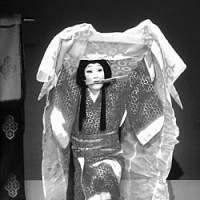Traditional Japanese dance forms are steeped in rules that often equal the number of dance moves that they consist of. But Kamigata-mai is different, as will be demonstrated at a free performance to be given on April 28 at Fukagawa Edo Museum's Small Theater.
The 19 members belonging to the Hana no Kai group will dance individually and in pairs in numbers that last 5 to 20 minutes. The group represents the Yoshimura school of dance that originated in Kyoto.
Kamigata-mai comes from Kamigata, the ancient name given to the area that encompassed Kyoto and its surrounding area. The tendency for lovers of traditional Japanese culture to focus on Edo (present-day Tokyo) culture means that they miss out on discovering the diversity and richness of Kamigata culture that dates back to the days when Edo was just a tiny fishing village.
One of Kamigata-mai's characteristics is that the dancers are required to be able to dance in tiny spaces as small as one tatami mat. Movements are, therefore, not fast and dynamic but rather gentle and slow. Unlike kabuki dances in which each character wears a set costume, the outfits in Kamigata-mai are not decided; however, performers have to choose those that convey elegance and beauty to accompany the tone of the music played.
Kamigata-mai will take place from noon to 5:20 p.m., April 28. Admission is free and visitors can enter any time between dance numbers.
The Fukagawa Edo Museum is located a 5-min. walk from Kiyosumi Shirakawa Station on the Toei Oedo subway line. For a map to the museum, go to www. kcf.or.jp/fukagawaedo-museum/index.html (Japanese only).

















With your current subscription plan you can comment on stories. However, before writing your first comment, please create a display name in the Profile section of your subscriber account page.